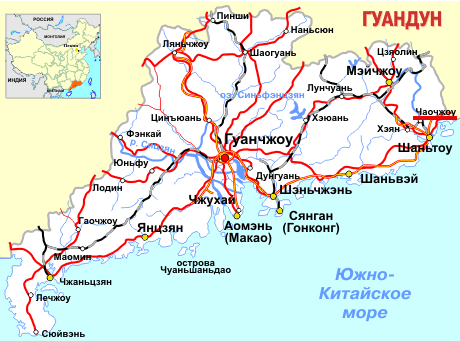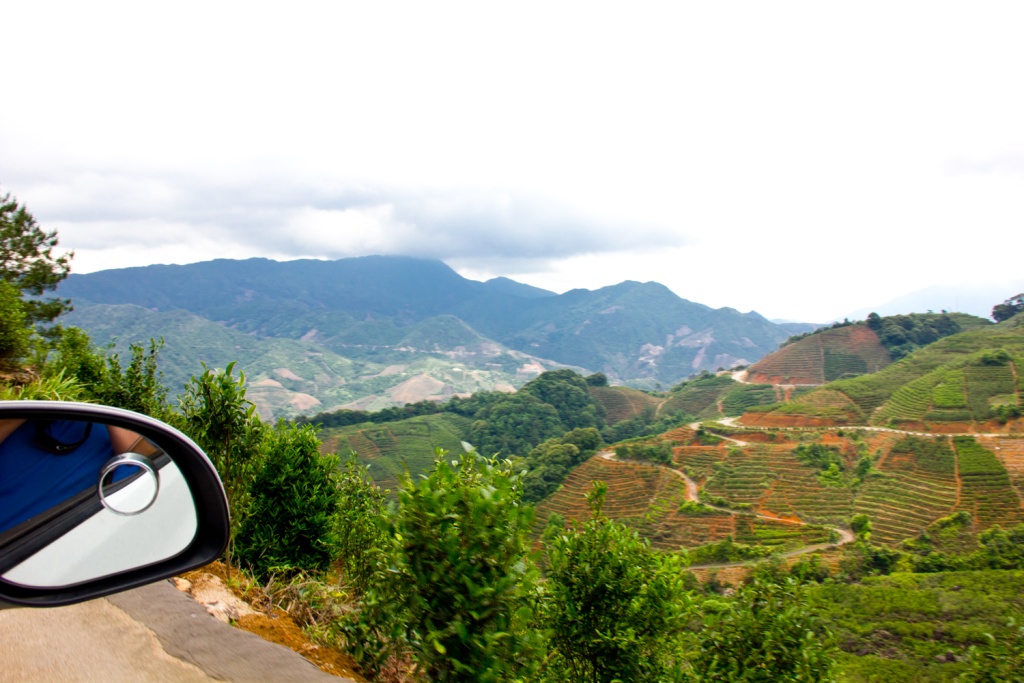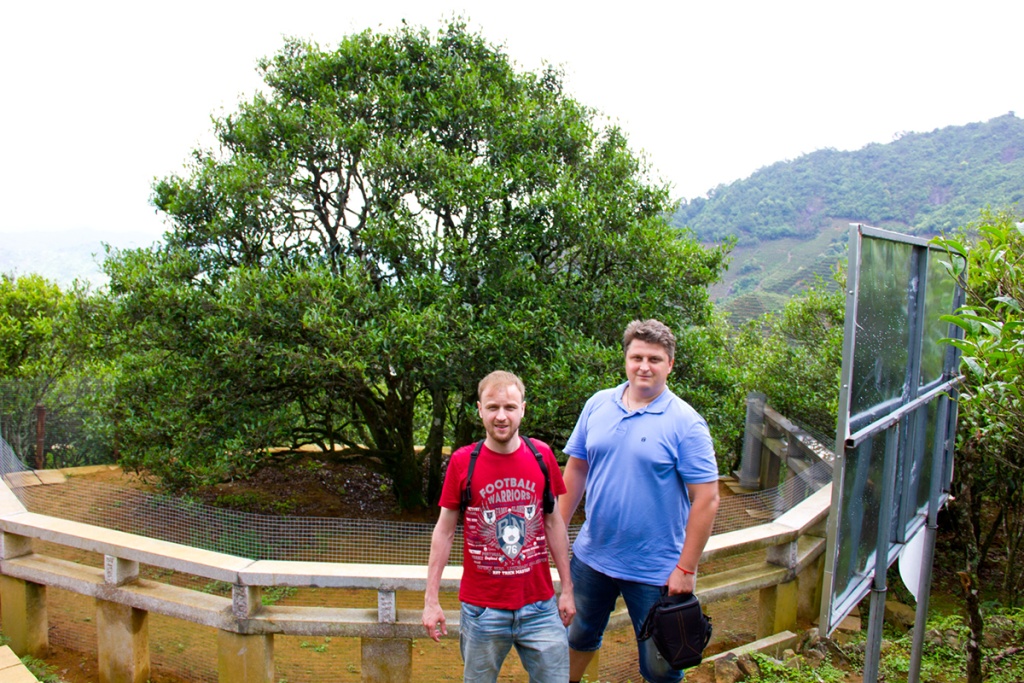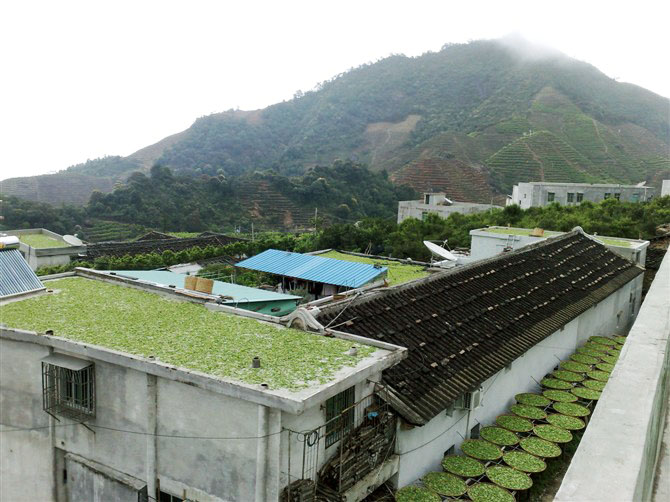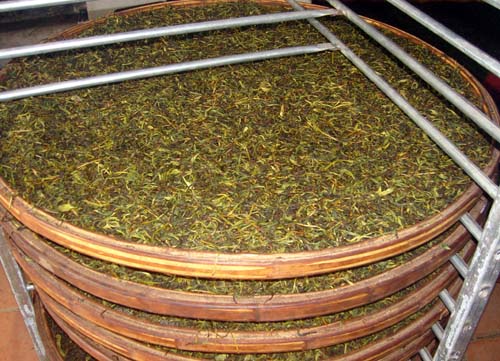Lonely Bushes of Phoenix Mountain Feng Huang Dan Cong – (凤凰单丛 - Fèng huáng dān cūn)
In Guangdong Province, the southernmost and warmest province of China, in the counties of Chao'an, Shaoping, and Qiaoling, they make special Dan Cong (Single Bush) oolongs. The most famous of this group of oolongs is Feng Huang Dan Cong. It, like other varieties, is collected from a specific bush. As a result, each batch has its own unique characteristics.
In the vastness of our Internet, you can find various names for this type of tea. Some call it Chaozhou Cha after the region where it grows, Chaozhou. Sometimes you can find names like Hallucinogenic tea because it gives a strong effect of tea intoxication. But the original name of this tea is still Feng Huang Dan Cong 凤凰单丛 (from Chinese Fèng huáng dān cūn - a lonely bush from the phoenix mountain).
History of origin
The history of the tea variety "Lonely Bushes from the Top of Phoenix Mountain", according to ancient sources, began in 1278. The ruler Zhao Bing, escaping from the pursuit of the troops of Kublai, the son of Genghis Khan, took refuge in the territory of the northeast, today's Guangdong Province, in the hard-to-reach and beautiful mountainous district of Chaozhou. During the long and troubled transition, Zhao Bing fell ill, and his entourage feared for the life of the ruler. But fortunately, he found himself in an unusual and very powerful place - Phoenix Mountain - Fenghuangshan (凤凰山).
Phoenix Mountain (凤凰山) is one of the five most sacred mountains in China. Through it, the favorable energy of Qi is distributed throughout the south of the Celestial Empire. In addition, Phoenix Mountain is a volcano, which gives special softness and strength to the plants growing on it. The peasants heard about the ruler's illness and decided to make a healing drink that removes a hundred diseases and brings youth, beauty and strength.
Sitting in the shade of an old tea tree, the Emperor tasted the wonderful drink, which immediately restored his strength and interest in life. The aroma of Phoenix was of high, mountain quality, comparable to the noble purity of the orchid from the imperial gardens, the taste was like the ripest autumn fruits with a pronounced ginger and pepper note. The Emperor enjoyed the taste of this wonderful drink more than once and insisted on the development of cultural tea growing in these beautiful places, which allowed this wonderful drink to be brought to our days.
Mount Phoenix is one of the sacred mountains of China, and it is also a dormant volcano, so the special composition of the local soil and the mountain climate have created a very special tea. The two bushes from which the history of this oolong began are still growing today, but they are under state protection, so tourists are not allowed to visit them. But you can look at them through a telescope from a neighboring mountain!
Tea obtained from these two bushes is sold only at auctions and for very large sums of money, so today oolong tea from bushes obtained vegetatively is on sale (the same story with Da Hong Pao).
In 1985, it was included in the list of the 16 best teas in China.
Feng Huang Dan Cong today
Feng Huang Dan Cong is produced in Guangdong Province, Chao'an, Shaoping, and Qiaoling counties. It is made from the tender leaves of Guangdong oolong tea trees. The most famous Feng Huang Dan Cong is collected near Shi Guping, Chao'an County.
Nowadays Feng Huang Dan Cong is one of the most unusual and memorable tea varieties. The tea leaves are collected from trees growing at an altitude of 1500 meters. Their strong trunks and strong branches indicate that some of them are more than a century old; their height reaches two meters, and the length of the leaves is 8-10 centimeters.
The collection is made separately from each tree in the fall and is never mixed, as each tree has its own unique qualities. This is reflected in the name - Feng Huang Dan Cong. Feng Huang is the name of the area (named after the mythical phoenix bird fenghuang), dan - single, separate, cong - a tree with a spreading crown. This tea is produced in small quantities - several kilograms per tree, which are often ordered by connoisseurs long before harvesting.
More than two hundred subspecies of this wonderful tea are produced in China. The main ones are:
1) 乌岽蜜兰香 (wu dong mi lian xian)
2) 乌岽礿来香 (wu dong yue lai xian)
3) 黄枝香 (huang zhi xian)
4) 桂花香 (gui hua xian)
5) 枝兰香 (zhi lian xian)
6) 杏仁香 (xing ren xian)
7) 玉兰香 (yu liang xian)
8) 蜜兰香 (mi lian xian)
In China, they say that this oolong has three qualities: it is resistant to repeated brewing, resistant to long-term storage, and resistant to fire (that is, hot water).
Stages of tea production:
1. Direct collection of the leaf. The raw material is collected four times a year, but autumn varieties are considered the most aromatic and rich in taste.
2. Withering in the sun so that the leaf loses some of its moisture and becomes suitable for further processing.
3. Indoor withering: The leaf is spread out on bamboo trays to allow the moisture level in the leaf to even out.
4. Crushing: The leaf is gently crushed by hand to release the juice and to allow oxygen to enter the leaf, which speeds up fermentation. The leaves are then left for a period of time to ferment (or, in simple terms, to "ferment" the tea juice under the influence of oxygen).
5. Roasting: The master determines when to stop the fermentation, and then the leaf is sent to roasting, which destroys the enzymes, stops the fermentation process, kills the smell of the green leaf (that's why in China this process is called "killing green").
6. Longitudinal twisting.
7. Final drying.
Harvesting Fen Huang Dan Cong tea
8. Selection, sorting and packaging.
Beneficial properties
The healing properties of Feng Huang, noted by the ancient ruler, are difficult to overestimate. In addition, many men consider it an excellent aphrodisiac. Feng Huang Dan Cong oolong contains more than 400 types of chemical compounds useful for the human body. The main ones are: polyphenol compounds, caffeine, vitamins C, D, E, K, B1, B6, B3, B12, calcium, phosphorus, iron, iodine, magnesium, selenium, zinc, manganese, etc. Manganese promotes the absorption of vitamin C by the body, strengthens the body's resistance to disease and counteracts the formation of tumors. The rich vitamin content in oolong tea helps strengthen the fibrous tissues of the walls of blood vessels.
We would recommend this tea for the second half of the day. It will warm you from the inside, help you relax, feel the coziness of the environment, create space for warm and deep communication. The amount of tea when brewing can reach from a third to half the volume of the teapot or gaiwan. It is brewed only with the best water, heated to 90ºС. During the brewing process, the leaves change their color from brown to dark green in an amazing way. The duration of brewing on average coincides with 1-2 calm breathing cycles, gradually increasing. This tea withstands on average 8-10 brews.
- Comments
- Vkontakte





